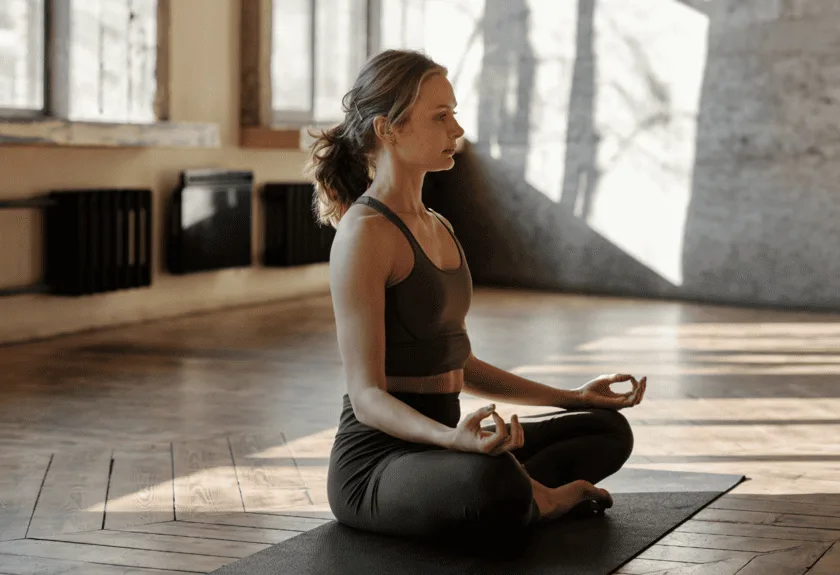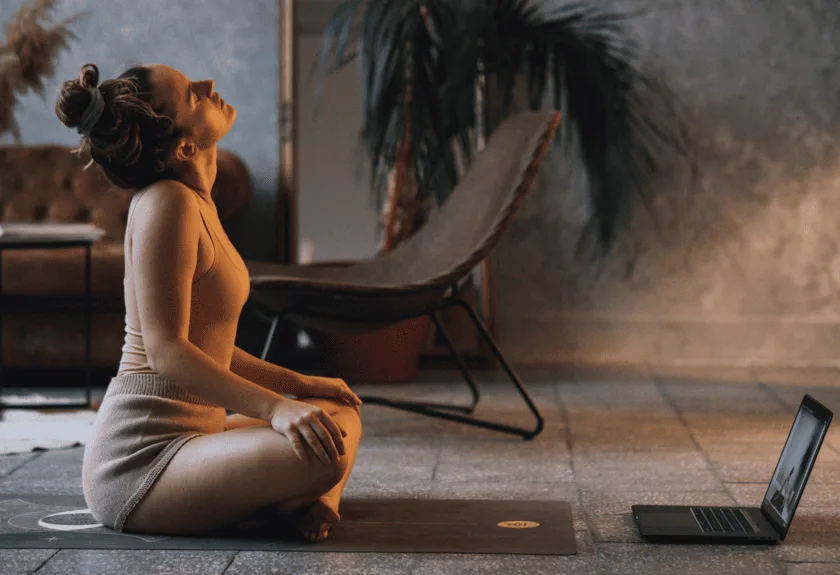Why Your Focus Matters in Meditation
The Role of Focus in Mindfulness
Focus is the cornerstone of mindfulness, acting as the bridge between the chaos of the external world and the tranquility of your inner self. When you meditate, your attention becomes the anchor that grounds you in the present moment. Without focus, mindfulness loses its essence, and the mind wanders aimlessly, pulled by distractions, worries, and endless streams of thought. By honing your focus, you create a space where you can observe your mind without judgment, fostering a sense of calm and clarity.
Think of focus as the lens through which you view your mental landscape. The sharper the lens, the clearer the image. When you train your mind to stay present, you begin to notice the subtle shifts in your thoughts, emotions, and bodily sensations. This awareness allows you to respond to life’s challenges with greater intention rather than reacting impulsively.
How Thoughts Shape Your Meditation Experience
Your thoughts are not just fleeting mental events; they have the power to shape your entire meditation experience. Neutral or positive thoughts can deepen your practice, helping you feel more connected and at peace. On the other hand, recurring negative thoughts can disrupt your focus, leaving you frustrated or discouraged. The key lies not in eliminating thoughts but in observing them without attachment.
- Observing Thoughts as Passersby: Imagine your thoughts as clouds drifting across the sky. You don’t need to chase them or hold onto them—simply notice them and let them go.
- Shifting from Judgment to Curiosity: Instead of labeling thoughts as “good” or “bad,” approach them with curiosity. Ask yourself, “Why is this thought here? What can it teach me?”
- Reframing Distractions: When distractions arise, use them as opportunities to strengthen your focus. Gently guide your attention back to your breath, mantra, or chosen point of concentration.
Remember, meditation is not about achieving a flawless state of focus but about cultivating a kind and patient relationship with your mind. Every moment of awareness, no matter how brief, is a step toward greater mental clarity and emotional resilience.
Simple Themes to Guide Your Meditation
Meditation doesn’t have to be complicated. In fact, the simpler your focus, the easier it is to cultivate presence—especially when life feels chaotic. Whether you’re new to meditation or simply looking for gentle anchors to return to, these three foundational themes can help ground your practice without overwhelming you.
Breathing: The Anchor of Mindfulness
Your breath is always with you, making it the most accessible tool for mindfulness. When your mind races or distractions pull you away, your breath is a steadying force. Try this:
- Natural rhythm: Don’t force it. Simply observe the inhale and exhale as they come.
- Counting breaths: Silently count to four on the inhale, pause, then exhale for four counts.
- Body-breath connection: Notice how your chest or belly rises and falls with each cycle.
Even one mindful breath can reset your nervous system. No need for perfection—just return to your breath, again and again.
Gratitude: Cultivating Positivity
Gratitude shifts your focus from what’s lacking to what’s already present. It’s a gentle way to rewire your mind for joy, even in small doses. Here’s how to weave it into meditation:
- Reflect on one thing you’re grateful for today—a warm cup of tea, a kind message, or simply being alive.
- Let the feeling of gratitude expand in your chest. Stay with it for a few breaths.
- If your mind wanders to stressors, gently guide it back to appreciation.
“Gratitude changes the way we see what we have, revealing abundance and completeness in the here and now”
Body Awareness: Reconnecting With Yourself
In a world of constant doing, meditation offers a rare chance to pause and listen to your body. Start with a quick scan:
- Close your eyes and notice areas of tension (jaw, shoulders, hands). Soften them with each exhale.
- Observe sensations without judgment—tingling, warmth, or even numbness.
- Thank your body for carrying you through each day, breath by breath.
This isn’t about fixing anything. It’s about acknowledging your body’s whispers before they become shouts.

Using Visualization to Deepen Your Practice
Picturing a Peaceful Scene
Visualization is a powerful tool that can significantly enhance your meditation practice. One effective way to use it is by picturing a peaceful scene in your mind. This could be a serene beach, a tranquil forest, or a quiet meadow. The key is to choose a place that evokes a sense of calm and relaxation for you.
- Start by closing your eyes and taking a few deep breaths.
- Imagine the details of your chosen scene—feel the warmth of the sun, hear the gentle rustle of leaves, and smell the fresh air.
- Allow yourself to fully immerse in this environment, letting go of any tension or stress.
By regularly practicing this technique, you can create a mental sanctuary that you can return to whenever you need a moment of peace.
Envisioning Your Goals and Aspirations
Another way to use visualization is by envisioning your goals and aspirations. This practice can help you stay motivated and focused on what you want to achieve in life. Whether it’s a personal, professional, or spiritual goal, visualization can make it feel more attainable.
“Visualization is shaping your dreams with intention and clarity”
- Begin by clearly defining your goal or aspiration. Be specific about what you want to achieve.
- Close your eyes and picture yourself already having achieved this goal. Imagine the emotions, the environment, and the people around you.
- Visualize the steps you need to take to reach this goal, and see yourself successfully completing each step.
This practice can help reinforce your commitment to your goals and provide you with the mental clarity needed to pursue them.
Emotional Reflection During Meditation
Acknowledging and Releasing Stress
Meditation offers a safe space to pause and acknowledge the stress that often accumulates in our daily lives. Instead of pushing it away, take a moment to identify what’s weighing on you. Is it a looming deadline, a difficult conversation, or simply the pace of modern life? Allow yourself to feel these emotions without judgment. By recognizing them, you take the first step toward releasing their grip on your mind and body.
Here’s a simple practice to help. These are just examples:
- Sit comfortably and close your eyes.
- Take a few deep breaths, inhaling calm and exhaling tension.
- Scan your body and mind for areas of tightness or unrest.
- Visualize each stressor as a heavy stone, and with each exhale, imagine setting it down, one by one.
This exercise can help you cultivate a sense of lightness and clarity, even in the midst of chaos.
Practicing Self-Compassion
Meditation is also a powerful tool for practicing self-compassion. Often, we’re our own harshest critics, holding ourselves to unrealistic standards. During meditation, try shifting your inner dialogue to one of kindness and understanding. Ask yourself: Would I speak to a friend this way? If the answer is no, it’s time to extend that same gentleness to yourself.
Here’s a way to weave self-compassion into your practice:
- Place one hand on your heart and the other on your belly.
- With each breath, silently repeat a phrase like, “I am enough,” or “I deserve peace.”
- If negative thoughts arise, acknowledge them without judgment, then gently return to your affirmation.
This practice can help you build a more nurturing relationship with yourself, fostering resilience and inner peace.
Incorporating mantras or affirmations
Choosing meaningful phrases
When incorporating mantras or affirmations into your meditation practice, choosing words that resonate deeply with you is essential. These phrases should reflect your values, goals, or the emotional state you wish to cultivate. For example, if you’re seeking calm, a phrase like “I am at peace with this moment” can be powerful. If you’re looking to build confidence, try something like “I am capable and strong.” The key is to ensure the words feel authentic and meaningful to you, as this will make them more effective in guiding your focus and intention.
Consider the following tips when selecting your affirmations:
- Keep it positive: Frame your affirmations in a positive light, focusing on what you want to embody rather than what you want to avoid.
- Make it personal: Tailor the words to your unique experiences and aspirations.
- Keep it simple: Short, clear phrases are easier to repeat and internalize.
Repeating affirmations for focus and calm
Repetition is the cornerstone of using affirmations effectively. By repeating a phrase—whether silently in your mind or aloud—you’re signaling to your brain to focus on that thought, pushing aside distractions and creating a sense of calm. This practice can be especially helpful when your mind feels cluttered or overwhelmed.
Here’s how to incorporate affirmations into your meditation routine:
- Set an intention: Before you begin, decide on the emotion or mindset you want to cultivate during your session.
- Sync with your breath: Repeat your affirmation on the inhale and exhale, allowing the rhythm of your breath to anchor the words.
- Be consistent: Use the same affirmation for several sessions to deepen its impact before moving on to a new one if desired.
Remember, the goal isn’t to force the affirmation to “work” but to use it as a tool to bring your mind back to the present moment. Over time, these repeated phrases can help rewire your thought patterns, fostering a greater sense of focus, calm, and self-compassion in your daily life.
Adapting Meditation to Your Lifestyle
Short Meditations for Busy Days
Life often feels like a whirlwind, leaving little room for extended meditation sessions. But even on your busiest days, short meditations can be a game-changer. Start with just one to three minutes—for example! A brief pause to focus on your breath or repeat a calming mantra can reset your mind and help you approach the day with greater clarity. Try these quick practices:
- Breath Awareness: Close your eyes and take three deep, intentional breaths. Notice the sensation of air entering and leaving your body.
- Body Scan Lite: Take 60 seconds to mentally scan your body from head to toe, releasing tension as you go.
- Mantra Moments: Choose a word or phrase like “calm” or “present” and repeat it silently for one minute.
Remember, the goal isn’t perfection—it’s about creating moments of pause amidst the chaos.
Finding Moments of Mindfulness in Daily Tasks
Meditation doesn’t always require sitting still—you can weave mindfulness into your everyday activities. By bringing your full attention to the present moment, even mundane tasks can become opportunities for calm and focus. Here’s how:

- Mindful Eating: Slow down and savor each bite. Notice the textures, flavors, and aromas of your food.
- Walking Meditation: Focus on the sensation of your feet touching the ground as you walk, even if it’s just to the bathroom or the kitchen.
- Breath Breaks: While waiting in line or at a red light, use that time to take a few conscious breaths.
These small practices help you stay grounded and connected to the present, even when life feels overwhelming.
Adapting meditation to your lifestyle isn’t about carving out huge chunks of time—it’s about finding what fits into your day. Whether it’s a short breath session or mindfulness during routine tasks, these moments add up, helping you cultivate peace and presence in the midst of your busy life.
Common challenges and how to overcome them
Dealing with distracting thoughts
One of the most frequent challenges during meditation is dealing with distracting thoughts. It’s natural for your mind to wander, especially when you’re just starting out. Instead of resisting these thoughts, try to acknowledge them without judgment. Imagine them as clouds passing by in the sky—observe them, let them drift, and gently bring your focus back to your breath or chosen point of concentration.
- Labeling: Mentally note thoughts as “thinking” or “planning” to create distance from them.
- Anchor: Use a mantra or a simple word like “calm” to refocus your attention.
- Patience: Remember, the goal isn’t to eliminate thoughts but to notice them and return to the present moment.
Staying consistent without pressure
Consistency is key to building a meditation practice, but it’s important to approach it without unnecessary pressure. Start small—even 5 minutes a day can make a difference. Focus on progress, not perfection. If you miss a session, don’t dwell on it; simply begin again the next day. Here are some tips to stay consistent:
- Set a routine: Meditate at the same time each day to build a habit.
- Celebrate wins: Acknowledge small milestones, like completing a week of practice.
- Adapt to your schedule: If mornings are hectic, try meditating during lunch breaks or before bed.
- Use reminders: Set alarms or use apps to gently nudge you to meditate.
FAQ: Overcoming common meditation challenges
What if I can’t stop my thoughts during meditation?
It’s completely normal. Meditation isn’t about stopping thoughts but observing them. Gently guide your focus back to your breath or anchor whenever you notice distractions.
How do I stay motivated when I don’t see immediate results?
Meditation is a gradual process. Focus on how it makes you feel in the moment, even if subtle, rather than expecting instant changes. Over time, the benefits will become more apparent.
Can I meditate even if I’m busy?
Absolutely! Even a few minutes of meditation can be beneficial. Fit it into your day wherever it feels manageable, whether it’s a quick session during a break or before sleep.
By addressing these challenges with patience and kindness, you’ll find that meditation becomes a more natural and rewarding part of your life. Remember, it’s not about perfection—it’s about progress and presence.
Reference:
- Fredrickson, B. L., Cohn, M. A., Coffey, K. A., Pek, J., & Finkel, S. M. (2008). Open hearts build lives: Positive emotions, induced through loving-kindness meditation, build consequential personal resources. Journal of Personality and Social Psychology, 95(5), 1045–1062. https://doi.org/10.1037/a0013262
- Brandmeyer, T., & Delorme, A. (2021). Meditation and the Wandering Mind: A Theoretical Framework of Underlying Neurocognitive Mechanisms. Perspectives on psychological science : a journal of the Association for Psychological Science, 16(1), 39–66. https://doi.org/10.1177/1745691620917340
- Zaccaro, A., Piarulli, A., Laurino, M., Garbella, E., Menicucci, D., Neri, B., & Gemignani, A. (2018). How breath-control can change your life: A systematic review on psychophysiological correlates of slow breathing. Frontiers in Human Neuroscience, 12, 353. https://doi.org/10.3389/fnhum.2018.00353
- Emmons, R. A., & Stern, R. (2013). Gratitude as a psychotherapeutic intervention. Journal of Clinical Psychology, 69(8), 846-855. https://doi.org/10.1002/jclp.22020
- Zemla, K., Sedek, G., Wróbel, K., Postepski, F., & Wojcik, G. M. (2023). Investigating the impact of guided imagery on stress, brain functions, and attention: A randomized trial. Sensors, 23(13), 6210. https://doi.org/10.3390/s23136210
- Chiesa, A., & Serretti, A. (2009). Mindfulness-based stress reduction for stress management in healthy people: A review and meta-analysis. Journal of Alternative and Complementary Medicine, 15(5), 593-600. https://doi.org/10.1089/acm.2008.0495






























